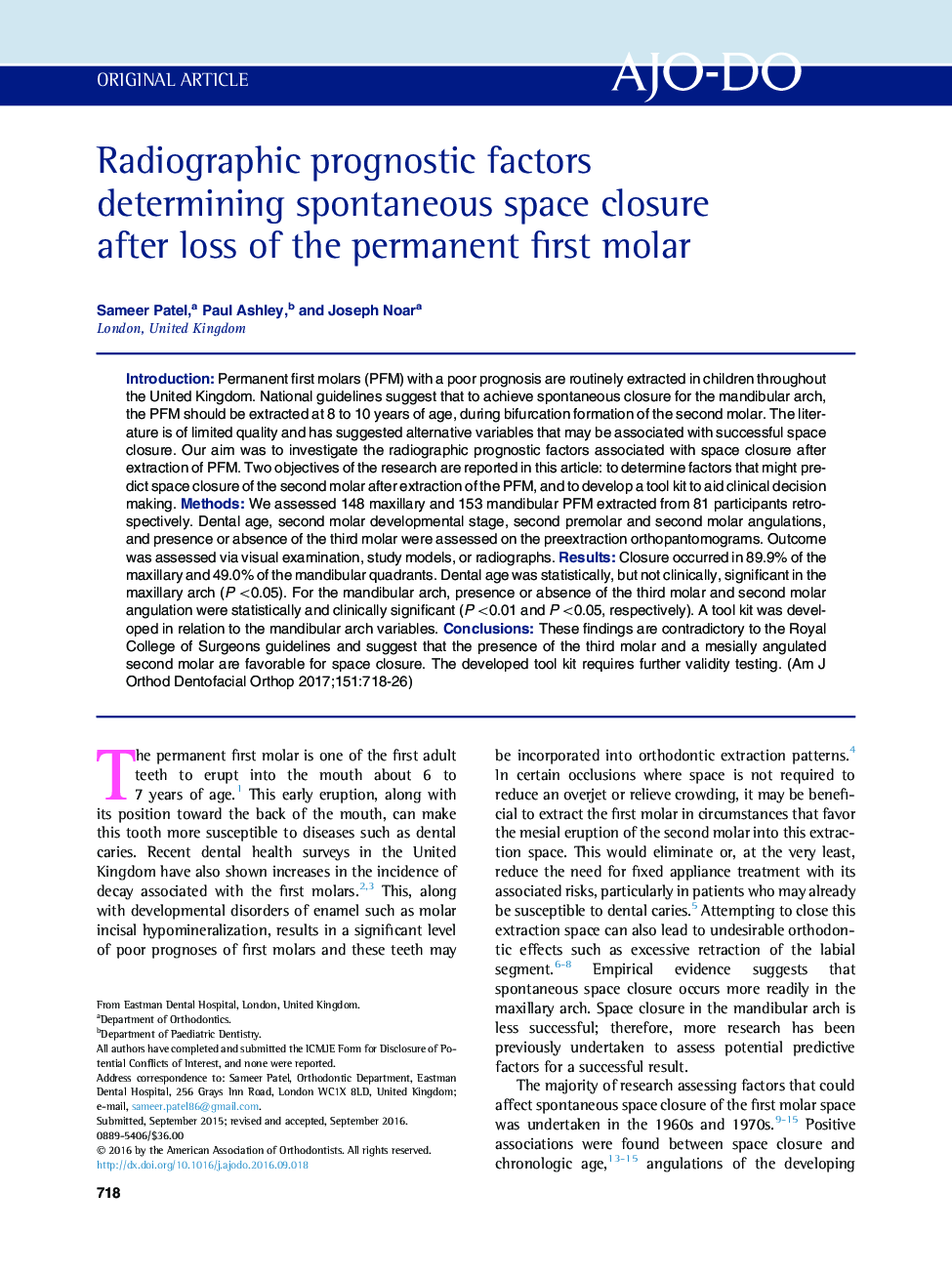| کد مقاله | کد نشریه | سال انتشار | مقاله انگلیسی | نسخه تمام متن |
|---|---|---|---|---|
| 5637644 | 1582665 | 2017 | 9 صفحه PDF | دانلود رایگان |
- Spontaneous space closure after first molar extraction is sometimes desirable.
- Guidelines suggest bifurcation development of the second molar as a predictive factor.
- Bifurcation may not be predictive.
- Second molar angulation and third molar presence may be predictive.
- A developed tool kit shows internal validity, but external validity is still required.
IntroductionPermanent first molars (PFM) with a poor prognosis are routinely extracted in children throughout the United Kingdom. National guidelines suggest that to achieve spontaneous closure for the mandibular arch, the PFM should be extracted at 8 to 10 years of age, during bifurcation formation of the second molar. The literature is of limited quality and has suggested alternative variables that may be associated with successful space closure. Our aim was to investigate the radiographic prognostic factors associated with space closure after extraction of PFM. Two objectives of the research are reported in this article: to determine factors that might predict space closure of the second molar after extraction of the PFM, and to develop a tool kit to aid clinical decision making.MethodsWe assessed 148 maxillary and 153 mandibular PFM extracted from 81 participants retrospectively. Dental age, second molar developmental stage, second premolar and second molar angulations, and presence or absence of the third molar were assessed on the preextraction orthopantomograms. Outcome was assessed via visual examination, study models, or radiographs.ResultsClosure occurred in 89.9% of the maxillary and 49.0% of the mandibular quadrants. Dental age was statistically, but not clinically, significant in the maxillary arch (P <0.05). For the mandibular arch, presence or absence of the third molar and second molar angulation were statistically and clinically significant (P <0.01 and P <0.05, respectively). A tool kit was developed in relation to the mandibular arch variables.ConclusionsThese findings are contradictory to the Royal College of Surgeons guidelines and suggest that the presence of the third molar and a mesially angulated second molar are favorable for space closure. The developed tool kit requires further validity testing.
Journal: American Journal of Orthodontics and Dentofacial Orthopedics - Volume 151, Issue 4, April 2017, Pages 718-726
